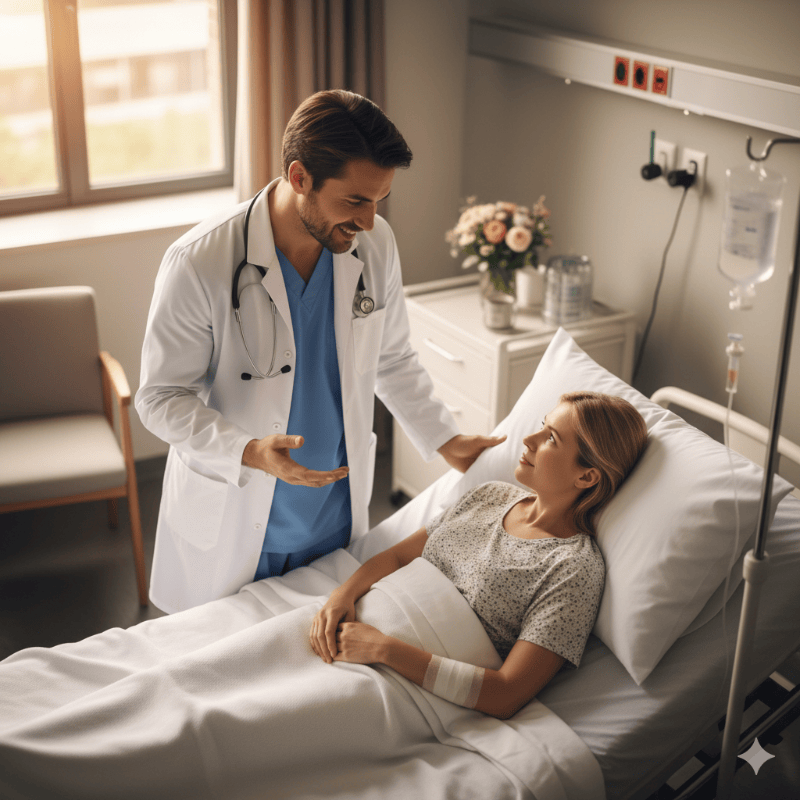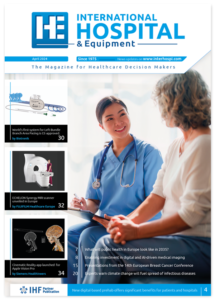Clinicians urged to revitalise bedside strategies as technology reshapes patient care
A new report in the New England Journal of Medicine outlines six practical strategies to strengthen fundamental clinical skills and restore the doctor-patient relationship in an increasingly technology-driven healthcare environment.
The practice of bedside medicine has undergone substantial changes in recent decades, with physicians and medical trainees spending less time with patients whilst relying more heavily on diagnostic technology. This shift has contributed to diagnostic errors, suboptimal patient outcomes and rising healthcare costs, according to a report published on 12 November 2025 in the New England Journal of Medicine.
The report, authored by researchers from Northwestern University and the University of Alabama at Birmingham, addresses mounting concerns about the erosion of fundamental bedside skills amongst modern medical trainees. Dr Brian Garibaldi, corresponding author and inaugural director of Northwestern University’s Centre for Bedside Medicine, highlighted a particularly concerning finding: “An appropriate physical exam can help avoid the need for additional diagnostic testing, yet research has shown the most commonly reported error in the physical exam is simply that the exam was never performed.”
Technology cannot replace clinical observation
The report, which forms the final instalment in the journal’s six-part series on medical education, emphasises that whilst artificial intelligence and other technologies offer valuable tools, they cannot substitute for direct patient observation and clinical examination. Dr Garibaldi noted that despite the proliferation of technological aids, “the primary information we get from patients during the history and physical exam is increasingly critical to the decisions we make. There’s only so much tech can do without the correct inputs from humans — both physicians and patients.”
The decline in bedside medicine has coincided with increased physician stress and burnout, alongside a perceived lack of empathy in patient care. To counter these trends, the authors propose six evidence-based strategies for clinical educators and practitioners.
The six strategies for bedside medicine
The first strategy advocates for direct observation at the bedside. The report notes that observing a patient from the foot of the bed or even from the hallway can reveal critical diagnostic and prognostic clues. The authors cite James Parkinson’s description of “Shaking Palsy”, which relied almost exclusively on direct patient observation. Importantly, the modern bedside now encompasses telemedicine and home health visits alongside traditional hospital rooms and outpatient offices. The report suggests that pre-clinical medical students can enhance their observational skills through non-medical contexts, such as art appreciation.
The second strategy promotes an evidence-based approach to physical examination. Traditional head-to-toe examinations can inadvertently encourage over-reliance on diagnostic tests. Instead, the authors recommend the hypothesis-driven physical exam (HDPE), wherein each examination step is selected based on clinical suspicion informed by the patient’s history and knowledge of common illnesses. This approach helps estimate the likelihood of specific diagnoses more efficiently.
Creating opportunities for intentional practice forms the third strategy. Patient-centred medical education conducted at the bedside during rounds can enhance both efficiency and physician satisfaction. The report emphasises that bedside sessions should commence early in medical school, as habits formed during training influence practice patterns throughout a physician’s career. Evidence shows that pre-clinical students who participate in observed bedside encounters with both real and standardised patients demonstrate superior clinical skills by the end of their third-year clerkships.
Integrating technology appropriately
The fourth strategy addresses the use of technology to teach and reinforce clinical examination skills. Whilst acknowledging that AI-enabled bedside medicine remains in development, the authors stress that results from AI interactions should inform rather than replace human observation, clinical decision-making and bedside communication. Point-of-care ultrasound (POCUS) exemplifies this principle: whilst it can identify diagnoses that elude traditional physical examination, its true value lies in requiring physicians to be present with patients, engage in conversation and appropriately expose the relevant body area for examination.
The fifth strategy focuses on seeking and providing feedback on clinical skills. Delivering feedback to learners in patients’ presence requires considerable skill, particularly when correcting examination technique or modifying diagnoses or treatment plans. Poorly delivered feedback may undermine the trainee-patient relationship, but when delivered thoughtfully and appropriately, bedside feedback can reassure patients that the entire care team is invested in their wellbeing.
Addressing broader healthcare challenges
The sixth strategy acknowledges the power of bedside encounters beyond diagnosis. The report recognises that uncertainty is inherent in patient care, but suggests that curiosity—the urge to investigate and discover—can mitigate uncertainty and help patients, clinicians and trainees negotiate it together, thereby strengthening the patient-physician relationship. Additionally, bedside encounters can address healthcare disparities; the report notes that a higher percentage of racial and ethnic minority teenagers reported never having physical examinations during routine check-ups compared with their white peers.
Dr Stephen Russell, a physician and professor in the University of Alabama at Birmingham’s division of general internal medicine and population science, emphasised the educational importance of these strategies: “From an educational standpoint, the best way to learn about patients is to be with them. Each of these six steps was crafted under the mindset of finding ways to get doctors out of the conference room and hallways and back to the bedside where their patients are located.”
The report concludes by invoking the words of master clinician educator Sir William Osler, whose observation remains pertinent over a century later: “Medicine is learned by the bedside and not in the classroom. Let not your conceptions of the manifestations of disease come from words heard in the lecture room or read from the book. See, and then reason and compare and control. But see first.”
By implementing these six strategies, clinical educators can help trainees appreciate the value of bedside encounters in diagnostic reasoning, strengthen patient-physician relationships, combat healthcare inequities and improve professional fulfilment whilst reducing burnout.
Reference
Garibaldi, B. T., & Russell, S. (2025). Strategies to reinvigorate the bedside clinical encounter. New England Journal of Medicine. https://doi.org/10.1056/NEJMra25002


